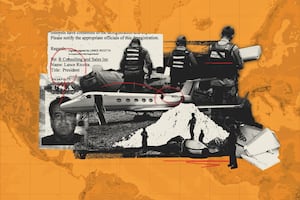Más Información

Morena analiza disminución de pluris y elección popular de consejeros del INE: Monreal; serán revisadas en la reforma electoral, dice

Rastro de jets vinculados al narcotráfico lleva a un vendedor en California… y a un punto ciego de la regulación aérea en Estados Unidos

Secretaría Anticorrupción sanciona a dos empresas por buscar contratos con información falsa; imponen multa de miles de pesos

Banxico se despide de 2025 con otro recorte a la tasa de interés; queda en 7% por ajuste de 25 puntos base

Sentencian en EU a yerno de “El Mencho” a más 11 años de prisión; el “Guacho” fingió su muerte para evitar captura
A total of 1,606 clandestine graves were detected by Mexican state prosecutors between 2006 and 2017, according to a report conducted by the Ibero-American University and social organizations.
The study called “Violencia y Terror: Hallazgos sobre Fosas Clandestinas en México 2006-2017” (Violence and Terror: Mass Grave Findings in Mexico 2006-2017) revealed that authorities were able to exhume a total of 2,489 human bodies and 584 remains in 24 of all 32 federal entities.
These numbers were obtained through requests for information. However, the report indicates that the problem could be even more serious considering that Mexican authorities don’t report as many mass graves as news outlets.
Between 2009 and 2016, the Mexican press reported 618 clandestine graves, from which 1,829 bodies were exhumed in 23 states .
In view of this situation, UN High Commissioner for Human Rights in Mexico Jan Jarab claimed that, although the figures were significant, “one must always keep in mind that we are dealing with human beings. We must not forget that behind those numbers, there are multiple individual stories,” he stated.
The UN representative made six recommendations to Mexico to address the issue of clandestine graves.
“The country should work to eradicate violence with a focus on human rights. Authorities should work to make a record of all mass graves and create a national exhumations program based on international standards. They should inform the population on the subject and strengthen research capacities to identify and sanction those responsible for the clandestine graves,” he stated.
A report called “Violence and Terror” shows that the Attorney General of the Republic was only able to identify 6% of exhumed corpses between 2000 and 2015.
In this sense, Karla Quintana, head of the National Search Commission , assured that there was a troubling lack of anthropologists and forensic archeologists in the country, which makes it harder to identify the victims’ bodies.
dm
Noticias según tus intereses
[Publicidad]
[Publicidad]









